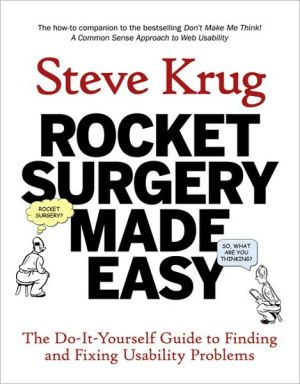Wired for Speech: How Voice Activates and Advances the Human-Computer Relationship
Interfaces that talk and listen are populating computers, cars, call centers, and even home appliances and toys, but voice interfaces invariably frustrate rather than help. In Wired for Speech, Clifford Nass and Scott Brave reveal how interactive voice technologies can readily and effectively tap into the automatic responses all speech — whether from human or machine — evokes.\ Wired for Speech demonstrates that people are "voice-activated": we respond to voice technologies as we respond to...
Search in google:
How interactive voice-based technology can tap into the automatic and powerful responses all speech—whether from human or machine—evokes. Library Journal Until recently, interfaces that talk and listen were found only in literature, comics, and film. Speech is now being used to interact with electronic systems in cars, telephone switchboards, home appliances, toys, word processors, and commercial kiosks to free people from the ubiquitous computing universe of windows, icons, menus, keypads, and pointers. Drawing on a decade of research collaboration between industry and Stanford University's CHIMe (Communication Between Humans and Interactive Media) Lab, Nass (communication, Stanford Univ.; The Media Equation) and postdoctoral scholar Brave (communication, Stanford Univ.) explore the social and technological challenge of designing interactive voice technologies that mimic human speech communication, both verbal and nonverbal. Practical psychological and behavioral questions are explored from both a research and an interface design standpoint, and subjects include gender, sex, personality, accents, race, ethnicity, emotion, facial cues, realism, and error rates. Balancing stylistically between a scholarly review of a hot disciplinary topic and a Kurzweil-like future technology tome, this exploration of the promise and difficulty of embedding speech, the most social of all communications, speech, into everyday technologies will be best appreciated by interface designers, scientists, scholars, and more sophisticated readers of popular science. For larger public and academic libraries.-James A. Buczynski, Seneca Coll. of Applied Arts & Technology, Toronto Copyright 2005 Reed Business Information.
1Wired for speech : activating the human-computer relationship12Gender of voices : making interfaces male or female93Gender stereotyping of voices : sex is everywhere194Personality of voices : similars attract335Personality of voices and words : multiple personalities are dangerous476Accents, race, and ethnicity : it's who you are, not what you look like617User emotion and voice emotion : talking cars should know their drivers738Voice and content emotions : why voice interfaces need acting lessons859When are many voices better than one? : people differentiate synthetic voices9710Should voice interfaces say "I"? : recorded and synthetic voice interfaces' claims to humanity11311Synthetic versus recorded voices and faces : don't look the look if you can't talk the talk12512Mixing synthetic and recorded voices : when "better" is worse14313Communication contexts : the effects of type of input on user behaviors and attitudes15714Misrecognition : to err is interface; to blame, complex17115Conclusion : from listening to and talking at to speaking with183
\ Library JournalUntil recently, interfaces that talk and listen were found only in literature, comics, and film. Speech is now being used to interact with electronic systems in cars, telephone switchboards, home appliances, toys, word processors, and commercial kiosks to free people from the ubiquitous computing universe of windows, icons, menus, keypads, and pointers. Drawing on a decade of research collaboration between industry and Stanford University's CHIMe (Communication Between Humans and Interactive Media) Lab, Nass (communication, Stanford Univ.; The Media Equation) and postdoctoral scholar Brave (communication, Stanford Univ.) explore the social and technological challenge of designing interactive voice technologies that mimic human speech communication, both verbal and nonverbal. Practical psychological and behavioral questions are explored from both a research and an interface design standpoint, and subjects include gender, sex, personality, accents, race, ethnicity, emotion, facial cues, realism, and error rates. Balancing stylistically between a scholarly review of a hot disciplinary topic and a Kurzweil-like future technology tome, this exploration of the promise and difficulty of embedding speech, the most social of all communications, speech, into everyday technologies will be best appreciated by interface designers, scientists, scholars, and more sophisticated readers of popular science. For larger public and academic libraries.-James A. Buczynski, Seneca Coll. of Applied Arts & Technology, Toronto Copyright 2005 Reed Business Information.\ \








